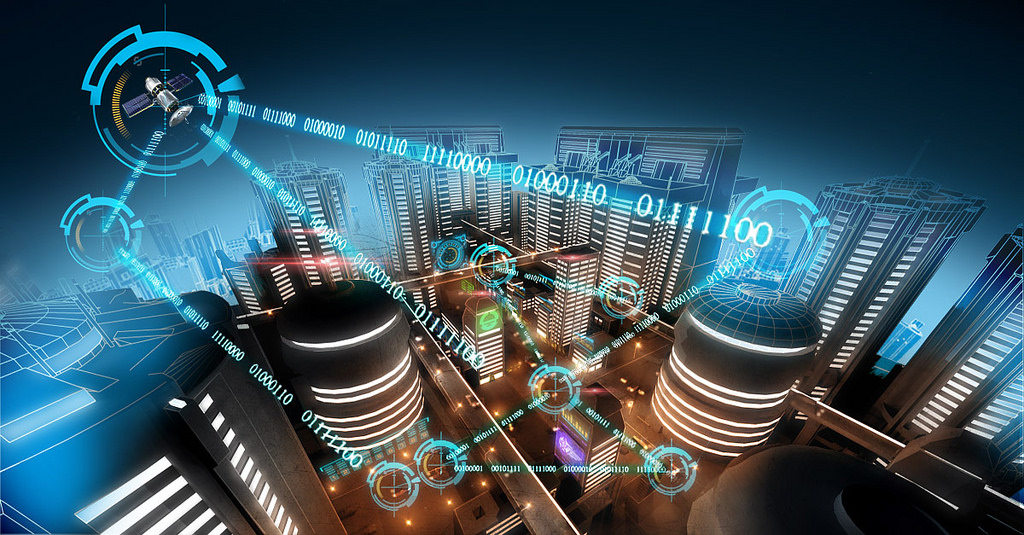What makes a ‘smart city’ smart? It’s not the devices, although the availability of computer-controlled sensors and actuators has enabled a huge range of smart city applications, writes Dr Chris Harding, director for interoperability at The Open Group.
Applications that help people
For example, San Francisco is using them to solve transportation problems; Tainan (Taiwan) is using them for water management systems to prevent flooding; and Paris has a vision of intelligent buildings with positive energy output for sustainability.
The Open Group is a partner in the bIoTope EU project which is exploring a range of smart city applications including information services for electric vehicles, helping children to get to and from school more safely, and bottle-bank management. This is just one of a number of experimental projects in the EU and worldwide, and these are just some of the applications that they are investigating.
The devices make these applications possible, but they are just the eyes, ears, and hands, not the brain. They do not provide a higher intelligence.
Data from the Internet of Things
Perhaps it’s the data that makes a smart city smart. The world’s connected devices, often referred to as the Internet of Things, are expected to generate unimaginable amounts of data, and smart cities will play their part in this.
A revolution is currently taking place in the way that we think about this data. It is no longer all stored in neatly structured relational databases. We now have “No-SQL” and other kinds of data store that follow different paradigms.
 The latest emerging technology is the data lake – a general repository that contains both structured and unstructured data and is optimised for the generation of insights, which can be obtained by statistical analysis or other methods, including artificial intelligence.
The latest emerging technology is the data lake – a general repository that contains both structured and unstructured data and is optimised for the generation of insights, which can be obtained by statistical analysis or other methods, including artificial intelligence.
The Open Group has just published the Open Business Data Lake Conceptual Framework, and we expect to see data lakes used increasingly to give insights for the planning and management of smart cities.
Data and data processing are certainly part of what makes a smart city smart – but they are really only performing the lower cognitive functions.
It’s all about the people
It is the people that provide the higher intelligence: the citizens, politicians and administrators. They decide that traffic management, flood prevention, energy conservation and so on are important, and create the systems that realise their visions. They make the decisions on how those systems will function, using the insights generated from the data.
These decisions are made collaboratively, and this requires a shared understanding of the smart city, of its components, and of how they fit together.
Enterprise architecture for smart cities
A smart city must have an architecture, to provide a common basis for planning, development, implementation and operation.
Enterprise Architecture is an established discipline, with a professional structure. It enables organisations of all kinds to improve business efficiency through effective use of information technology. Enterprise architects can use this discipline to develop the architectures that smart cities need. They typically do this using an architecture framework such as TOGAF®, which is the de facto global standard for Enterprise Architecture.
The architect looks first, not at the smart devices, but at the “business architecture” which, in the context of a city, means the motivations of the people who live and work there. The business architecture drives the architecture of the information and the applications that process it.
This drives, in turn, the technology architecture: the choice and arrangement of the smart devices, the networks connecting them to the data stores and processing applications, and the platforms on which those stores and applications are built.
It is the people that make a smart city smart, and they do this most effectively using a smart city architecture. Anyone who has been to Paris or Chicago will appreciate the difference that the architecture of the streets and buildings can make to the quality of life of a city’s inhabitants.
The architecture of the technology and information systems can make a difference that is equally important, if less obvious. They can make a city a better place to live and work in. Smart people make smart cities, and smart cities make happier people.
The author of this blog is Dr Chris Harding, director for interoperability at The Open Group
Comment on this article below or via Twitter: @IoTNow OR @jcIoTnow










